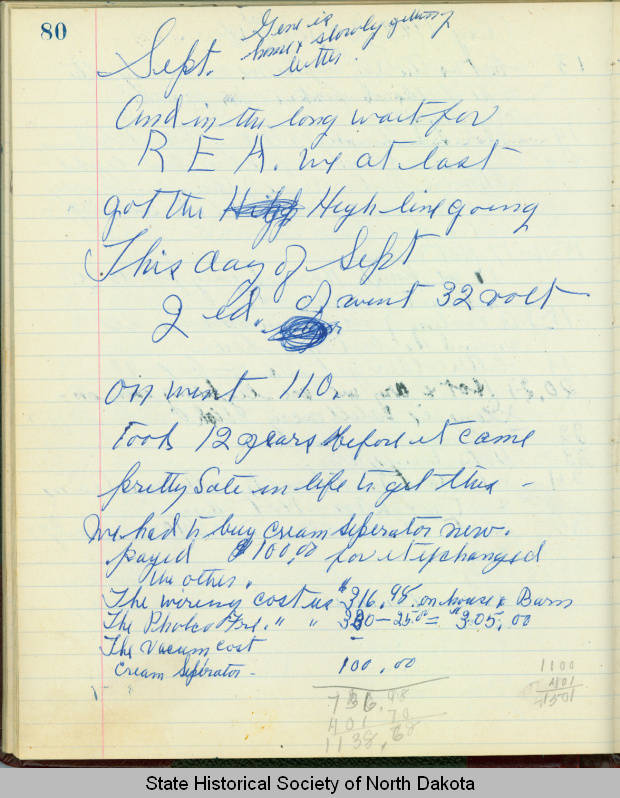The second supporting question, “Did technology improve life on the farm?” helps students use sources to unwrap the context of the time and topic being examined. Complete the following task using the sources provided to build a context of the time period and topic being examined.
Formative Performance Task 2
Read featured source A closely for evidence of what life was like on a farm before and after rural electrification. Write a summary that answers the following questions: What type of source are these (letters, photos, maps, diaries, etc.)? What kind of information do they contain? Who created these sources? Who was the intended audience for each source? Why were these sources created? When were the sources created? What do the sources tell us about farming during the early 1900s? How do we know? What else can you find? Do additional research to find out when telephones, rural electrification, and television first came to your own community. How did people keep food fresh, bathe, or wash clothing before they had electricity? What did they do in the evenings after sunset? Find someone to talk to who remembers their first television.
Featured Sources 2
Featured source A is a compilation of primary sources from one author. Pauline Olson married John Jacob Olson in 1905. Her parents were Norwegian immigrants who had moved first to Minnesota where Pauline was born, and then to Dalen Township in Bottineau County. John had been born in Sweden and came to Dalen Township with his parents as a boy. Together they farmed in Haram Township in north central Bottineau County on land bordering Canada where they raised their four children. Pauline began to keep a diary in 1926. Her six volumes mostly detail weather conditions, but she also kept track of major family events, world affairs, sports news, and farm business. Occasionally she noted the arrival of new technologies that changed her life. Their farm was quite isolated: it was five miles from the tiny village of Souris and sixteen miles northwest of Bottineau. Telephones, first installed in 1905, connected them to their neighbors. Decades later, electricity allowed the Olson’s to have television, indoor water, and appliances in their home.
Pauline Olson also kept track of world events such as the development of the atomic bomb and wondered how this weapon, which had so changed the world, might be affecting their farm. Oil wells in a nearby section seem to have raised the hopes of many in her community, but she worried that big money would perhaps leave a negative impact on the people of Haram Township. The most exciting change that occurred in Pauline Olson’s sixty-four years on her farm was electrification. Congress had passed, with President Franklin Roosevelt’s support, a law providing support for construction of electric generating stations and rural power lines in 1935. Yet, by the end of World War II in 1945, North Dakota still had the smallest percentage of farms with electricity delivered by line than any other state in the nation (some had small generators or weak and unreliable wind-generated power). But in 1949, rural electric cooperatives began to organize, and these agencies brought electricity to rural farms like the Olson’s. By the mid-1950s, most of rural North Dakota had access to electricity.
Olson had a remarkable ability to look back into the past, identify an important point of change as manifested by technology, observe the course of that event to the present, and anticipate that the technology would continue to evolve in the future. Though a farm woman in a remote part of the United States might seem to live the most ordinary of lives, she understood the historical importance of daily life and kept a careful record of household events for her children. Her daily entries reveal that, even as she tracked the events of her time, she knew her diaries would one day be historic documents. These sources can be found in the Pauline Krogen Olson Diaries (SHSND Mss 10140).
| Source A |
Pauline Krogen Olson Diaries 
http://www.digitalhorizonsonline.org/digital/collection/uw-ndshs/id/3061 |


